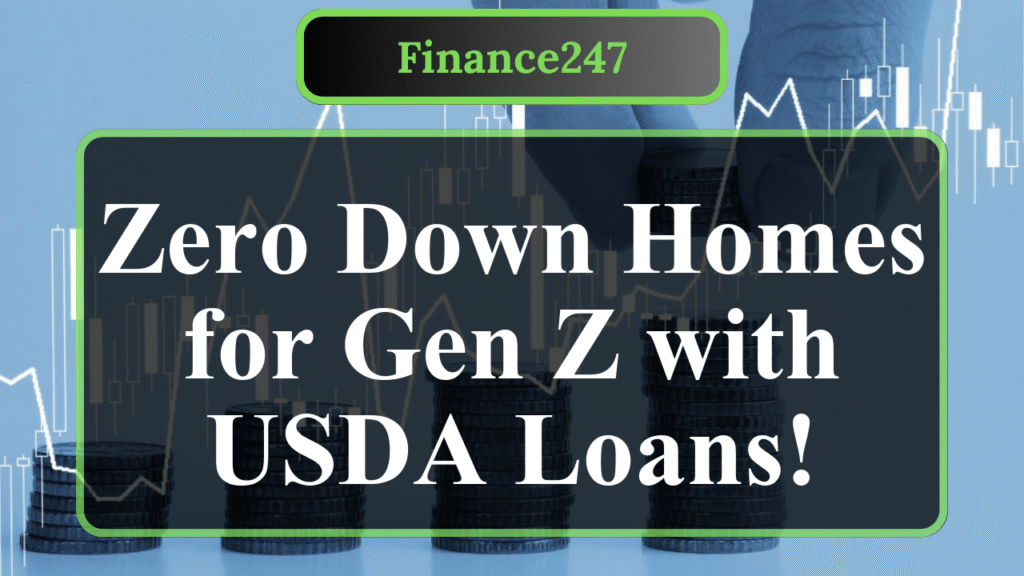USDA loans offer Gen Z homebuyers a path to homeownership with no down payment and low interest rates. This article explores eligibility criteria, including income limits and rural area requirements, application steps, and benefits like flexible credit standards. Learn how to leverage USDA loans to achieve affordable homeownership in rural and suburban areas, tailored for young buyers entering the housing market.
Unlocking Homeownership: A Guide to USDA Loans for Gen Z
For Generation Z, entering the housing market can feel like navigating a maze, with high home prices and hefty down payments posing significant barriers. USDA loans, backed by the U.S. Department of Agriculture, offer a lifeline for young buyers seeking affordable homeownership in rural and suburban areas. These zero-down-payment mortgages come with competitive interest rates and lenient credit requirements, making them ideal for first-time buyers with limited savings. Here’s how Gen Z can navigate USDA loans to secure their dream home.
Understanding USDA Loans
USDA loans are part of the USDA Rural Development Guaranteed Housing Loan Program, designed to promote homeownership in rural and some suburban areas. They come in two main forms: Guaranteed Loans, issued by private lenders with a USDA guarantee, and Direct Loans, funded directly by the USDA for low- and very-low-income households. Both types require no down payment, a major advantage for Gen Z buyers who may struggle to save for a traditional 3–20% down payment required by conventional loans.
Guaranteed Loans are more common and accessible, offered by USDA-approved lenders to low- and moderate-income borrowers. Direct Loans, however, are reserved for those with incomes at or below 50–80% of the area median income (AMI), with payment assistance that can reduce effective interest rates to as low as 1%. As of 2025, the interest rate for Direct Loans is 5.00%, while Guaranteed Loans typically offer rates 0.5–0.75% lower than conventional mortgages.
Eligibility Requirements for Gen Z
To qualify for a USDA loan, Gen Z buyers must meet specific criteria related to income, credit, and property location. Household income must not exceed 115% of the AMI for Guaranteed Loans or 80% for Direct Loans, varying by county and household size. For example, in 2025, the income limit for a 1–4 member household is approximately $110,650, and $146,050 for 5–8 members in many areas. Use the USDA’s income eligibility tool to check limits for your county.
Credit requirements are flexible. Most lenders prefer a credit score of 640 for Guaranteed Loans to streamline approval through the USDA’s Guaranteed Underwriting System, but lower scores may qualify with manual underwriting if you demonstrate financial responsibility, such as on-time rent or utility payments. A debt-to-income (DTI) ratio of 41% or lower is typically required, though some lenders allow up to 46% with strong credit or cash reserves.
The property must be in a USDA-eligible rural area, defined as having a population of 35,000 or less, though many suburban areas qualify. Check the USDA Property Eligibility Map to verify if a home’s address is eligible. The property must be a primary residence, not a vacation home or investment property, and meet safety standards, including structural integrity, reliable utilities, and no major issues like a failing septic system.
Benefits Tailored for Gen Z
USDA loans are particularly appealing for Gen Z due to their affordability. The no-down-payment feature eliminates a major hurdle, as saving for a down payment can take years. For a $300,000 home, a conventional loan might require $9,000–$60,000 upfront, whereas a USDA loan requires only closing costs, which can often be rolled into the loan or covered by the seller (up to 6% of the sale price).
These loans also have lower interest rates than conventional mortgages, often by 0.5–0.75%, reducing monthly payments and long-term costs. Instead of private mortgage insurance (PMI), USDA loans charge a 1% upfront guarantee fee (rollable into the loan) and a 0.35% annual fee, which is lower than the 0.85–1.5% PMI on FHA or conventional loans. This can save hundreds annually, crucial for budget-conscious Gen Z buyers.
Flexible credit standards are another boon. Many Gen Z buyers lack extensive credit histories, but USDA lenders may accept nontraditional credit, like consistent rent payments, to qualify. Additionally, USDA loans allow financing for home repairs or energy-efficient upgrades, such as solar panels or new windows, helping young buyers personalize their homes without upfront costs.
Application Process: Step-by-Step
Check Eligibility: Use the USDA’s online tools to confirm income and property eligibility. Ensure your household income is within limits and the home is in a qualifying area. Gather documents like pay stubs, tax returns, W-2s, bank statements, and proof of citizenship or legal residency.
Get Preapproved: Contact a USDA-approved lender, such as Guild Mortgage or Flagstar Bank, which offer USDA loans nationwide and accept lower credit scores (as low as 540 in some cases). Preapproval involves a review of your income, debts, and credit, resulting in a letter stating your borrowing capacity. This strengthens your offer when house hunting.
Find a Home: Work with a real estate agent familiar with USDA loans to identify eligible properties. Ensure the home meets USDA safety and habitability standards, verified through a USDA-approved appraisal. Be prepared to provide property records, such as a deed or tax statement, to confirm eligibility.
Apply for the Loan: Submit a formal application through your lender, including all required documentation. For Direct Loans, apply through a local USDA Rural Development office. The lender or USDA will assess your repayment ability and the property’s condition.
Close the Loan: Once approved, review the loan terms, including the guarantee fees and interest rate. Closing costs, typically 2–5% of the loan amount, can be financed or paid by the seller. After signing, you’re ready to move into your new home.
Tips for Success
Shop Around: Compare offers from multiple USDA-approved lenders to secure the best rates and terms. A stronger financial profile, like a higher credit score or lower DTI, can lower your interest rate.
Improve Credit: Dispute inaccurate credit report marks and pay down debts to boost your score before applying. Free credit monitoring services, like CreditWise or Experian, can help track progress.
Work with Experts: Choose a lender and real estate agent experienced in USDA loans to navigate property eligibility and appraisal requirements smoothly.
Explore Direct Loans: If your income is very low, consider a Direct Loan for payment assistance, which can reduce monthly costs significantly. Contact your local USDA office for guidance.
Challenges to Watch For
USDA loans have limitations. The rural area requirement restricts home choices, and income caps may exclude higher-earning Gen Z households in costly regions. The appraisal process is strict, and homes with issues like structural damage or inadequate utilities may not qualify. Guarantee fees, while lower than PMI, still add to costs. Additionally, not all lenders offer USDA loans, so research is key to finding a provider like Neighbors Bank or Artisan Mortgage, which specialize in these programs.
Why USDA Loans Suit Gen Z
For Gen Z, facing a challenging housing market with rising prices and interest rates, USDA loans offer stability and affordability. Fixed-rate terms ensure predictable payments, and extended loan terms (up to 33 or 38 years for Direct Loans) lower monthly costs. With 97% of U.S. land eligible, many small towns and suburbs are accessible, allowing young buyers to live near urban centers while benefiting from rural loan perks.
By leveraging USDA loans, Gen Z can overcome financial barriers and build wealth through homeownership without the burden of a large down payment or high interest rates. Start by checking eligibility and connecting with a USDA-approved lender to take the first step toward owning a home in a rural or suburban community.
Disclaimer: This article is for informational purposes only and does not constitute financial or legal advice. Consult with a qualified financial advisor or USDA-approved lender for personalized guidance. Information is sourced from reputable websites, including USDA.gov, NerdWallet, Bankrate, and other mortgage resources, but program details may change, so verify with official USDA sources.


